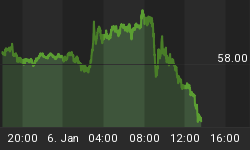Some interesting charts came my way today regarding the income inequality debate.
Let's start with some charts, then explore the meme of the day that rising income inequality is behind "secular stagnation".
I challenge economists Brad DeLong, Larry Summers, Ben Bernanke, Paul Krugman, Steve Keen, Michael Pettis (and anyone else), to respond to this post.
The Financial Times article US's flawed economic recovery divides Trump and Obama supporters has a pair of interesting charts on income income growth and income inequality. Here is the first.
Income Growth

That is an interesting, albeit extremely biased chart. Had the chart broken out the top .01% instead, it is highly likely even the top 1% might have looked weak by comparison.
Of course the bulk of the gains went to the top 1%, as it should be. Were they supposed to go to zero-skilled teenagers removing baskets from automated fryers at McDonald's?
Real Household Income
Here's a look at the situation from an unbiased perspective courtesy of Doug Short at Advisor Perspectives: Monthly Median Household Income Since 2000.

At the median level, household income rose from $40,804 to $58,221. That's a jump of 42.7%.
But inflation ate up the entire increase, and a tiny bit more, as the next chart shows.

The median household is actually worse off than 17 years ago. And many would dispute the alleged CPI, making matters even worse.
It's safe to assume that at least 50% of households are worse to much-worse off than they were 17 years ago.
Progression of Income Inequality

Top 1% Share Synopsis
-
Percentage of income going to the top 1% went from under 15% to over 20% at its peak in the Bill Clinton administration.
-
Things spiked under George Bush but the chart shows the percentage income going to the top 1% finished the administration where it started.
-
Under President Obama, the percent of income going to the top 1% went from about 18% to about 21%.
-
The entire jump from under 15% to 21% of income going to the top 1% occurred under Clinton and Obama.
-
Under Reagan, start to finish, the percent of income going to the top 1% went from about 10% to over 14%.
Secular Stagnation Thesis

Secular Stagnation Thesis
Brad DeLong discusses Larry Summers' "secular stagnation thesis" in Three, Four… Many Secular Stagnations!
DeLong list 17 reasons, and his number one reason is "High income inequality, which boosts savings too much because the rich can't think of other things they'd rather do with their money."
Pin the Tail on the Donkey
At no point does either DeLong or Summers pin the tail on this donkey. Neither can, because income inequality is a symptom of the problem.
That problem started the moment Nixon closed the gold window. The event is now described as "Nixon Shock".
Indeed it was. Unencumbered by a need to redeem gold, credit exploded.
Credit Market Before and After Gold Window Closed

Gold Window Synopsis
-
Total credit exploded from $1.7 trillion to $63.5 trillion at the end of 2015.
-
To service that growing pile of debt, the Fed had to keep slashing interest rates.
-
Instead of allowing consumers to benefit from technological advances that are inherently price deflationary, the Fed sought to increase inflation. This is to the benefit of the banks and already wealthy.
-
A policy of 2% inflation coupled with no restraints on trade deficits (thanks to removal of the gold window), encouraged the outsourcing of jobs.
-
After the dot-com bubble burst in 2001, the Greenspan Fed stepped on gas blowing the biggest housing bubble on record. Then the Fed bailed out the banks, the asset holders and the wealthy. This chain of events left the median person being worse off than before.
-
Given that executive pay is based on performance, rising share prices further benefited the the top 1%.
-
Fed policy itself, coupled with rampant expansion of credit thanks to Nixon closing the gold window is totally responsible for the rising income inequality from 1971-present.
Grasping Reality With Both Hands
Instead of attacking the symptoms of the problem, as Summers and DeLong do, let's be honest about the real problem. Let's also be honest about the alleged scourge of deflation.
My Challenge to Keynesians "Prove Rising Prices Provide an Overall Economic Benefit" has gone unanswered.
There is no answer because history and logic both show that concerns over consumer price deflation are seriously misplaced.
The BIS did a study and found routine deflation was not any problem at all.
"Deflation may actually boost output. Lower prices increase real incomes and wealth. And they may also make export goods more competitive," stated the BIS study.
For a discussion of the BIS study, please see Historical Perspective on CPI Deflations: How Damaging are They?
The final irony in this ridiculous mix is central bank policies stimulate massive wealth inequality fueled by soaring stock prices.
Grasping Reality With Both Hands
Delong's blog is entitled "Grasping Reality With Both Hands". It would behoove, Delong, Summers, and Ben Bernanke to do just that.
A good starting point is "why" income inequality is rising as opposed to investigating ridiculous wealth-transfer schemes and government stimulus projects in a fool's mission to fix a problem that Summers, DeLong, Bernanke, and Krugman all fail to understand.
Brad DeLong, Larry Summers, Ben Bernanke, Paul Krugman, Steve Keen, Michael Pettis, and anyone else, have at it. Where am I wrong?
















